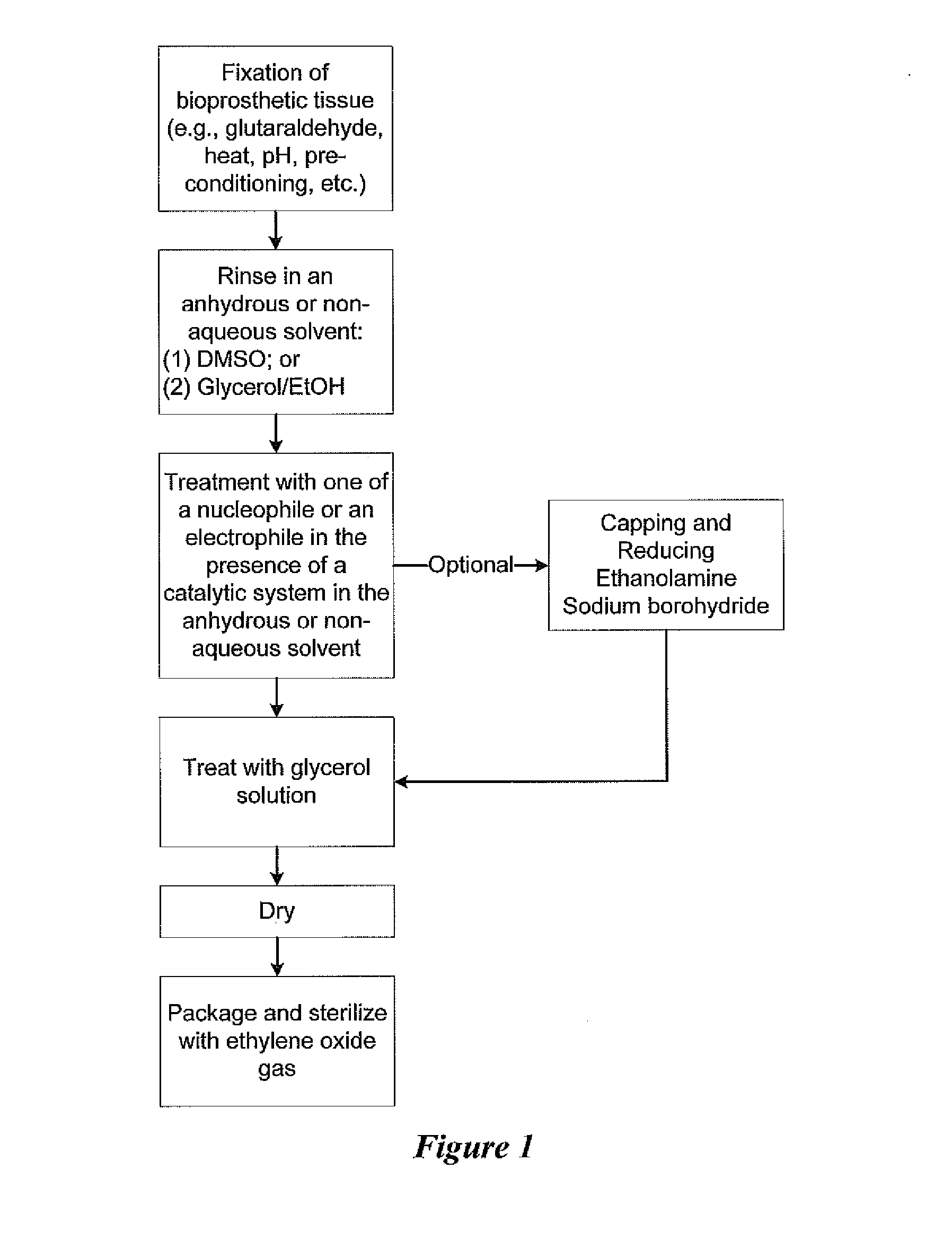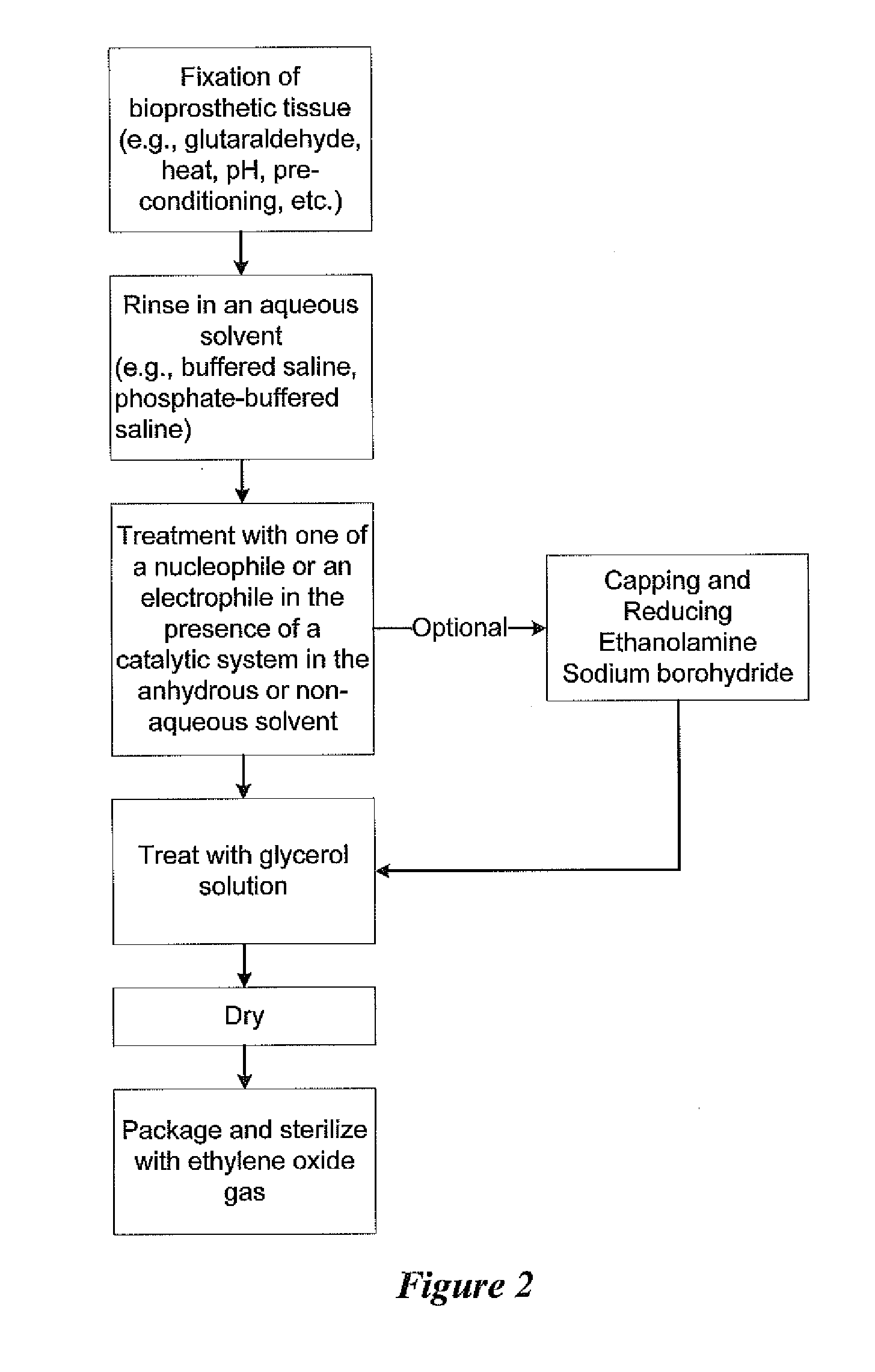Methods for treating bioprosthetic tissue using a nucleophile/electrophile in a catalytic system
a nucleophile/electrophile and catalytic system technology, applied in the field of methods, can solve the problems of non-autologous tissue use in bioprosthetic implants, immunological rejection and calcification, and significant challenges in bioprosthetic implants
- Summary
- Abstract
- Description
- Claims
- Application Information
AI Technical Summary
Benefits of technology
Problems solved by technology
Method used
Image
Examples
Embodiment Construction
[0034]Specific, non-limiting embodiments of the methods for cross-linking bioprosthetic tissue will now be described with reference to the drawings. It should be understood that such embodiments are by way of example only and merely illustrative of but a small number of embodiments within the scope of the present disclosure. Various changes and modifications obvious to one skilled in the art to which the present disclosure pertains are deemed to be within the spirit, scope and contemplation of the present disclosure as further defined in the appended claims.
[0035]The preferred embodiments described herein are directed to methods for treating biological tissue for use in connection with an implantable bioprosthesis. Because biological tissues used for implantable bioprostheses originate from non-autologous sources, the biological tissue must be treated prior to implantation to maintain a sufficient degree of mechanical strength and dimensional stability. At the same time, the biologi...
PUM
| Property | Measurement | Unit |
|---|---|---|
| pH | aaaaa | aaaaa |
| electrophile | aaaaa | aaaaa |
| mechanical strength | aaaaa | aaaaa |
Abstract
Description
Claims
Application Information
 Login to View More
Login to View More - R&D
- Intellectual Property
- Life Sciences
- Materials
- Tech Scout
- Unparalleled Data Quality
- Higher Quality Content
- 60% Fewer Hallucinations
Browse by: Latest US Patents, China's latest patents, Technical Efficacy Thesaurus, Application Domain, Technology Topic, Popular Technical Reports.
© 2025 PatSnap. All rights reserved.Legal|Privacy policy|Modern Slavery Act Transparency Statement|Sitemap|About US| Contact US: help@patsnap.com


